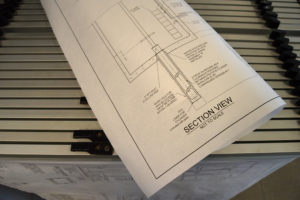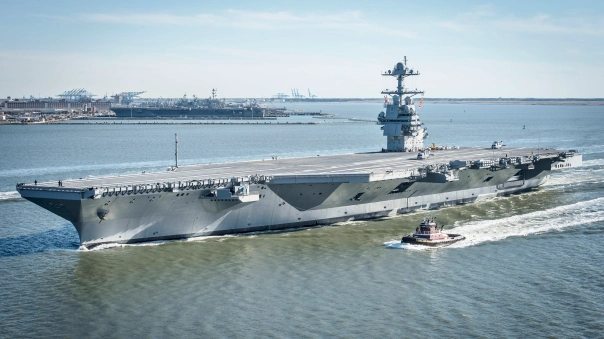Fireman Key – Please Use the Fireman’s Key (Not an Ax)
January 22, 2018Elevator Buyers Remorse
February 19, 2018Please Check Your Elevator Specs

When it comes to new elevator installations or big modernization projects, it is crucial to check your specs. I am talking about the specifications of the project where the elevator is concerned (Section 14) and the very basis for the bids you will get for the job to be completed. One of the no-nos we see most is the old copy-and-paste routine where old plans or ideas get dragged and dropped into place without the slightest run through or consideration (we’ve actually seen specs with the wrong project name because they were copied-and-pasted right from another project). The more complex the overall project, the more likely someone just plopped old specs down from previous jobs. Resist this temptation as it could keep you from finding the right fit at the right cost.
How can this time saving, “control c”, “control v” hurt you down the road? Here is one example:
We made a sale at Phoenix Modular Elevator in the New Elevator Sales Division of the company. After the celebration and all the corks were popped, reality started to sink in on the part of the customer. Despite us being the lowest price overall and a great fit for the elevator (including the car, hoistway wiring and installation), they asked if we could squeeze a bit more out of the price and the elevator car was the first place they started looking for savings.
Here’s the Rest of the Story
In the specifications for the elevator that we put in a bid for, that they signed off on, bought, and was being produced was a steel-core elevator cab. The problem with a steel cab is that they are way more expensive (to the tune of three times as much), but do not offer any benefits that a wood core cab wouldn’t offer. As a matter of fact, steel cabs are louder, rattle more over time, are more prone to have mechanical failures, and no where else can you sound as much like you are in a tin can. But, steel cabs are easier to handle, because they come in panels, when you are building an elevator car in a vertical shaft (a truly dumb way to build an elevator). We build ours outside of the hoistway and insert the cab in the manufacturing process. So, we can do either steel or wood core cabs. It makes no difference to us other than cost. Sadly, it was just too late for this customer’s project and that potential cost savings was lost because someone copied and pasted the specs.
When we called to confirm details, we were told to “Quote to the spec.”
If they had taken a closer look at the specifications early on, then this could have been avoided. They could have indicated no preference for the type of cab and we would have included the less expensive, much quieter, wood core model.
What You Need to Know
So, with that said, here are specific things that you should make sure are correct in your specs:
→ Type of cab: steel or wood. Either are fine but steel can drive costs.
→ Mode of conveyance: Fancy way of saying how it goes up. Too many folks are sold more expensive options.
→ Capacity: How much can it carry. Measured in weight such as 3000 lb. to 5000 lb. or more. Local and national code can dictate the capacity, but often, especially with multi-elevator projects, there’s a bit of wiggle room as long as one unit meets code required capacity.
→ Footprint: I can’t tell you how often we have read the specs. and then the size changes later on down the road. If you’re not restricted by a pre-existing hoistway, chances are any code complaint unit will be more than fine, regardless of the dimensions listed on the spec.
→ Special needs: ADA compliant (all of our units are), gurney compliant, or freight.
→ Door type: Side slide or center parting; two speed vs. single speed.
→ Type of finish: We take the time to price out the specified finish, so be sure that you absolutely need or want the stainless steel ceiling or metal panels sometimes called out in the spec.
Stainless steel or other finishes for the doors and jambs.
→ Additional features – Only include ones you really want (battery lowering, NEMA4 fixtures, security features, etc.). We’ve spoken to a number of people who asked why our price was so high, and when we went through the spec, they realized they didn’t need the card-reader security feature or vandal resistant hall calls.
→ Is modular a suitable replacement?
We can provide any of the above and more. If you have a special request in mind, we can and have done it before. However, asking for things like center parting doors instead of side slide, just because it’s “in the spec”, can cost you. Keep in mind that, by-and-large passengers don’t care about or notice most of these things, so you don’t have to care either. Most people just want to push a button and for the elevator to go up (or down, as the case might be).
Not Sure – Ask for Standard
If you are not sure about any of the above, it’s ok to ask for standard, baseline packages and then add on to the elevator once you have compared everyone based on the same specs. Additionally, we will look over the plans and make sure that everything will meet code and function.
I wish we had a dime every time we priced according to the specs, made a call to verify and are told emphatically to follow the specs, but when the job is awarded, the specs are then changed. Suddenly, we are quoting and re-quoting, the price goes either up or down depending on what is missing or wrong. Many elevator companies have caught on to the fact that specs are just copied from old jobs so they don’t follow them at all. They just quote their standard and in the fine print on the bid it indicates that the price will change once the contract is awarded. This defeats the purpose of requesting bids at all where one company follows the specs and another doesn’t.
For a quick quote before you spec, click the button below.



